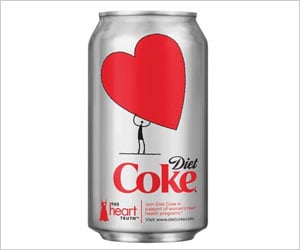Exposure to hot baths or hot tubs on a regular basis can lead to male infertility, according to a new study conducted by University of California
Exposure to hot baths, Jacuzzis or hot tubs on a regular basis can lead to male infertility, according to a new study conducted by University of California. The effect was found to be reversible in 50 % of the men observed.
Results from a three-year study are reported in the March-April 2007 issue of 'International Braz J Urol,' the official journal of the Brazilian Society of Urology. Study findings will be available online at www.brazjurol.com.br.'It has been believed for decades that wet heat exposure is bad for fertility, as an old wives’ tale, but this effect has rarely been documented,' said Paul J. Turek, MD, lead investigator who is a professor in the UCSF Department of Urology and director of the UCSF Male Reproductive Health Center. 'We now have actual evidence to show patients that these recreational activities are a real risk factor for male infertility.' Turek also added that concern about wet heat effects on infertility crosses many cultures. He cited a centuries-old practice in Japan of barring childless men from conducting business deals in hot tubs, due to its believed effect on fertility.
Although this was only a pilot study, Turek said, 'these activities can be comfortably added to that list of lifestyle recommendations and ‘things to avoid’ as men attempt to conceive.'
This is the first published study to show that total body exposure to wet heat can also impair both sperm production and motility. Study findings also showed that the negative effect of this exposure was reversible in nearly half of the infertile men who discontinued the practice.
The only previously published study to examine this link was performed in 1965, according to the research paper. In that study, 20 men were exposed to direct scrotal wet heat for 30 minutes on six alternating days. The findings showed a temporary decline in sperm production during the treatments, but there were no details of semen quality before and after the study. An unpublished Swiss study in the 1940s had also linked wet heat to temporary male infertility.
The present study’s 11 patients were identified on the basis of repeated exposure to wet heat and were asked to cease that exposure for three or more months. Five of the patients (45 percent) responded favorably to the cessation of heat exposure and had a mean increase in total motile sperm counts of 491 percent after three to six months. This increase was largely driven by a statistically significant increase in sperm motility among responders, from a mean of 12 percent at the start of the study to 34 percent post-intervention.
For the purposes of this study, wet heat exposure was defined as the immersion of the body in a hot tub, heated Jacuzzi or bath at a temperature warmer than body temperature for 30 minutes or more per week for at least three months prior to participation in the study. Patients were excluded from the study if they had received infertility treatments in the previous year, or if female infertility was a co-existing factor.
The ASRM estimates that 85 percent to 90 percent of infertility cases can be effectively treated with drug therapy or surgical procedures. Less than 3 percent require advanced reproductive technologies, such as in vitro fertilization, but those techniques can be costly. The ASRM cites an average IVF cost of $12,400 per cycle in the United States.
'One implication of this work is that a simple lifestyle maneuver could ‘shift the care’ from high-tech intervention to low-tech or no-tech,' Turek said. 'Couples really prefer having kids at home and not with technology. This is a way to help them do that.' Turek advises men who would like to conceive a child to 'treat your body like a temple: Eat well, sleep well and take good care of yourself.'
Source-Eurekalert
PRI/S
 MEDINDIA
MEDINDIA
 Email
Email




